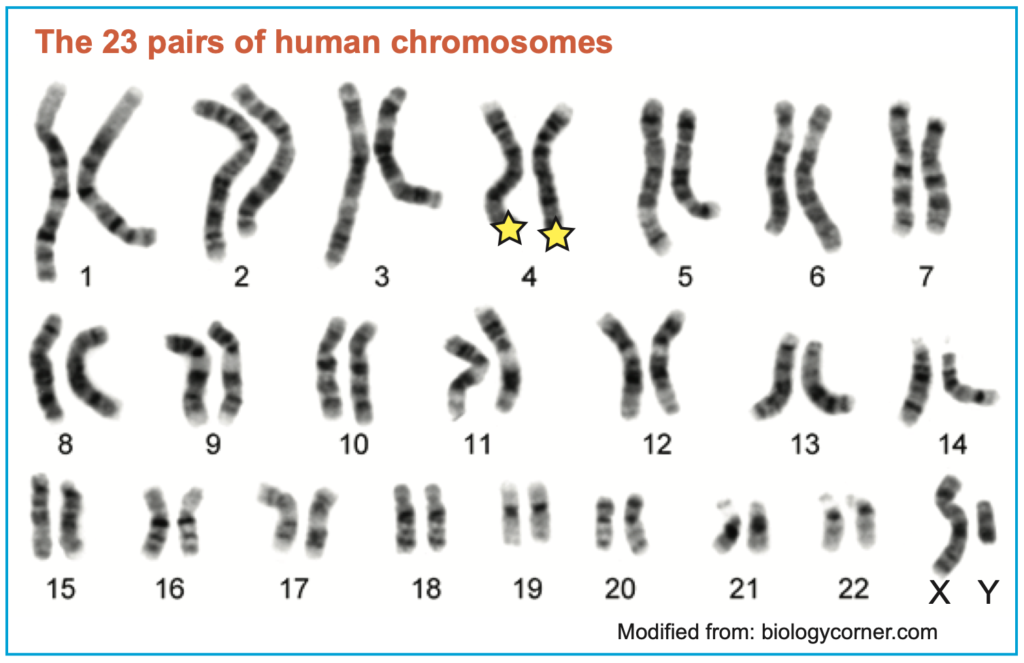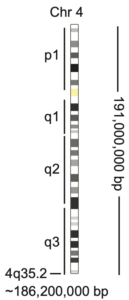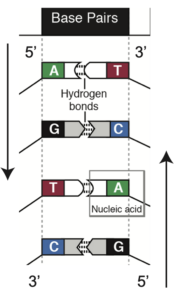About FSHD
Introduction to FSHD genetics
The FSHD region is on chromosome 4q35.2
This region is typically referred to as 4q35 in the field. It is adjacent to the 4q subtelomeric region. (Human Molecular Genetics (1993) 2:2037-42 and Neuromuscular Disorders (1993) 3:487-91.)
Your genome is made up of ~6.4 billion base pairs of DNA (~3.2 billion from Mom, and ~3.2 billion from Dad). (The Human Genome Project)
Your genome is organized into 23 pairs of chromosomes (#1-22 + X/X or X/Y), one of each from Mom and one from Dad. FSHD is associated with chromosome 4, marked with a yellow star in the graphic below.
Chromosome pairs are numbered according to their size, with #1 being the largest pair and #22 being the smallest.

Chromosomes have a structure that divides them into two unequal arms; the shorter of the two arms is called “p”, for petite (French for “small”), and the longer is called “q”, well, just because (French for “large” is grande, so…).

You will notice in the chromosome spread below that each chromosome has a light and dark banding pattern. The bands reflect differences in chromosome composition and structure that are differentially stained. The numbers after the “p” or “q” refer to this banding pattern. The bands are first separated into regions then bands then sub- bands. The FSHD region is located at chromosome 4q35; therefore, it is on the long arm (q) of chromosome 4, at banding region 3, band 5, sub-band 2, or 35.2 for 4q35.2. However, the FSHD region is generally just called 4q35.


(National Human Genome
Research Institute)
Chromosomes also can be measured in base pairs (bp) of DNA. There are 4 DNA bases (C,A,T,G) that run in anti-parallel strands formed into a double helix such that C on the (+) strand bonds with G on the (-) strand; A bonds with T, T bonds with A, and G bonds with C; these are referred to as DNA bp (C:G, A:T, T:A, G:C).
Each chromosome 4 has ~191,000,000 bp* of DNA from the tip of 4p (called 4pter) to the tip of 4q (called 4qter). The exact amount of DNA varies between individuals due to mutations, normal human variation in repetitive DNAs, and from aging (telomeres get shorter as we age).
The FSHD gene is located at 4q35.2 and is ~186,200,000* bp from the 4p tip.
It is marked with a yellow star on the chromosome graphic on this page.
A gene provides the instructions for making a protein. The FSHD gene is called DUX4. It makes a protein that is bad for muscle health.
According to the human genome project, in addition to FSHD, there are at least 77 other human diseases associated with genes located on chromosome 4.
*Exact size varies depending on the database and version of the human genome sequence.

